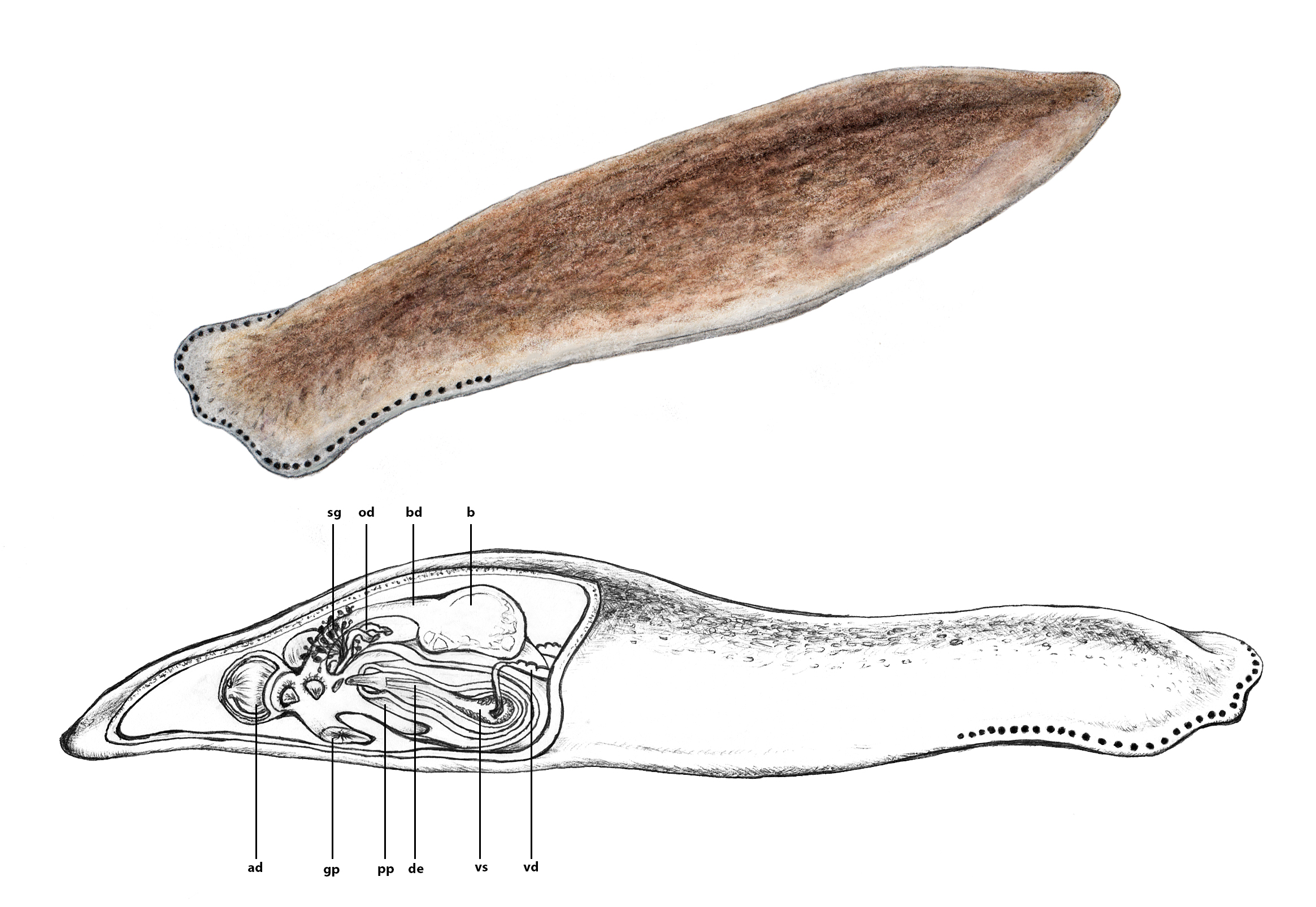

Yeah, I can draw, but I didn't use this skill for ages [I'm mostly totally clueless what to do with it now, seriously] . This is first thing which I colored after many years so be polite with me ;]
So what is on picture? It's common species of Czech flatworm - Polycelis tenuis.
I needed make clear where and what is located in flatworms so there is picture of part of genital organs which are important in their species determination.
Also visual material which is available is sometimes...not so visually attractive so i decided make own. Ovaries and testes are missing there.
Abbreviations for figure:
b - copulatory bursa; [flatworms are hermafrodites, but like exchange of genetic material anyway, so there they store spermathophores by other worms]
bd- bursa duct;
gp - gonopore;
od - oviduct
de- ejaculatory duct;
pp - penis papilla;
sg - shell glands; [they making transfer of eggs easier with extra mucus]
vd -vas deferens;
vs - seminal vesicle [vesicula seminalis]
ad - adenodactyls [organs characteristic for turbellarians, probably helps with creating of cocoons [Wenig, 1901], P. tenuis could have 0-2]
If you notice there is something oddly located or missing [for example I'm not sure if this species have cement glands] please note me in comments.
Used books and papers:
Roman Kenk - Freshwater Triclads (Turbellaria) of North America V: The Genus Polycelis 1973
Marie Reslová - Ploštěnky (Platyhelmintes: Tricladida) v ČR 2011
Medium: aquarelle, crayons , pen and ball-pen on two random A4 papers located on table ;]
You can compare this pic with microscopy of living animal, histology of animal from same genus which helped a lot there and living specimen in natural position:

Moar about locality here